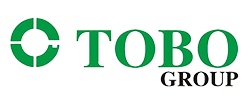Speaking the Language: How to Effectively Communicate Your Piping Needs to a Technical Supplier
Speaking the Language: How to Effectively Communicate Your Piping Needs to a Technical Supplier
You have a critical project that requires high-performance piping. You know the operational challenges: the corrosive chemicals, the high pressure and temperature, the consequences of failure. But when you contact a technical supplier, the conversation can sometimes feel like crossing a language barrier.
Miscommunication here is costly. It can lead to receiving the wrong material, costly project delays, or even a system that fails prematurely. The goal is not just to place an order, but to initiate a successful partnership.
The key is to structure your communication in a way that provides the supplier with a complete, unambiguous picture of your requirements. Here’s how to speak their language effectively.
1. Start with the "Big Picture" Context
Before diving into technical specs, set the stage. A good supplier is a problem-solver, not just an order-taker. Giving them context allows them to offer valuable insights or flag potential issues you may not have considered.
-
What to Say: "We are designing a new scrubber system for our chemical plant that will handle a flue gas containing chlorides at 180°C. The piping needs to have a 30-year service life with minimal maintenance."
-
Why It Matters: This immediately tells the supplier you're dealing with a corrosive, high-temperature environment, guiding them toward suitable material families (e.g., Duplex, Super Duplex, or Nickel Alloys) and away from inappropriate ones.
2. Provide the Non-Negiable Technical Trifecta
These three pieces of information form the absolute foundation of any piping inquiry. Without them, a supplier can only guess.
A. The Material Specification:
This is more than just "Hastelloy" or "Stainless Steel." It's the exact, standardized grade that defines its chemistry and properties.
-
The Language: Use standard designations.
-
Good: "We require piping to ASTM B729 / ASME SB729 for UNS N08028."
-
Unclear: "We need super stainless steel pipes."
-
B. The Dimensional Requirements:
Be precise. "Standard sizes" can mean different things to different people.
-
The Language: Specify Outside Diameter, Wall Thickness (Schedule or direct mm/in), and Length.
-
Good: "We need 100 meters of 4" NPS, Schedule 40S, in 6-meter random lengths."
-
Unclear: "We need some 4-inch pipes."
-
C. The Quantity:
This seems obvious, but being specific helps with pricing and logistics.
-
The Language: State the total quantity, broken down by size if your order has variations.
3. Define the Required Documentation and Certification
For critical applications, the paperwork is part of the product. Specifying this upfront separates serious suppliers from the rest.
-
The Language:
-
"A Full Material Test Report (MTR) to ASTM B729 is required, traceable to heat number."
-
"All material must be supplied with Positive Material Identification (PMI) verification report."
-
"The mill must be capable of supplying materials meeting ASME Section III (Nuclear) requirements." (If applicable)
-
4. Specify the Required Testing and Inspection
This is your quality assurance checkpoint. It tells the supplier the level of scrutiny you will apply.
-
The Language:
-
"All pipes must undergo 100% Ultrasonic Testing (UT) per ASTM E213 to verify wall thickness and detect discontinuities."
-
"Hydrostatic Testing to 1.5 times the design pressure is required."
-
"We require the right to witness final inspection at your facility."
-
5. Discuss the Project Timeline Clearly
A realistic timeline helps the supplier plan and manage your order within their production schedule.
-
The Language: "Our project requires delivery to our site in Rotterdam by October 15th. What is your confirmed lead time from receipt of order?"
A Template for Your Next Supplier Inquiry
To make it easy, structure your next Request for Quote (RFQ) like this:
Subject: RFQ - Nickel Alloy C-276 Piping for FGD System
Project Overview:
-
Application: Flue Gas Desulphurization (FGD) system, handling chlorides and weak acids at 90°C.
-
Service Life Requirement: 25 years.
Technical Requirements:
-
Material Standard: ASTM B729 / ASME SB729 for UNS N10276 (Alloy C-276).
-
Dimensions:
-
150 meters of 8" NPS, Schedule 40S, Double Random Length.
-
50 meters of 6" NPS, Schedule 40S, Double Random Length.
-
-
End Connection: Beveled ends for butt-welding.
Quality & Certification:
-
Certification: Full MTRs traceable to heat number are mandatory.
-
Testing: 100% UT inspection and Hydrostatic testing required.
-
Additional: PMI report must be supplied.
Commercial & Logistics:
-
Quantity: As specified above.
-
Delivery Date: Required on site by [Date].
-
Destination Port: Hamburg, Germany.
Conclusion: From Vendor to Valued Partner
Effective communication transforms your relationship with a technical supplier. When you provide a clear, comprehensive, and professional request, you signal that you are a knowledgeable and serious buyer.
This doesn't just get you a price; it starts a technical dialogue. The right supplier will review your specs, ask clarifying questions, and might even suggest a more cost-effective or technically superior alternative you hadn't considered.
By speaking their language, you ensure you don't just get what you asked for—you get what you actually need.

 EN
EN
 AR
AR
 BG
BG
 HR
HR
 CS
CS
 DA
DA
 NL
NL
 FI
FI
 FR
FR
 DE
DE
 EL
EL
 HI
HI
 IT
IT
 JA
JA
 KO
KO
 NO
NO
 PL
PL
 PT
PT
 RO
RO
 RU
RU
 ES
ES
 SV
SV
 TL
TL
 VI
VI
 TH
TH
 TR
TR
 GA
GA
 CY
CY
 BE
BE
 IS
IS

